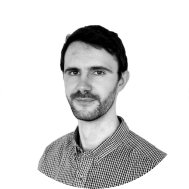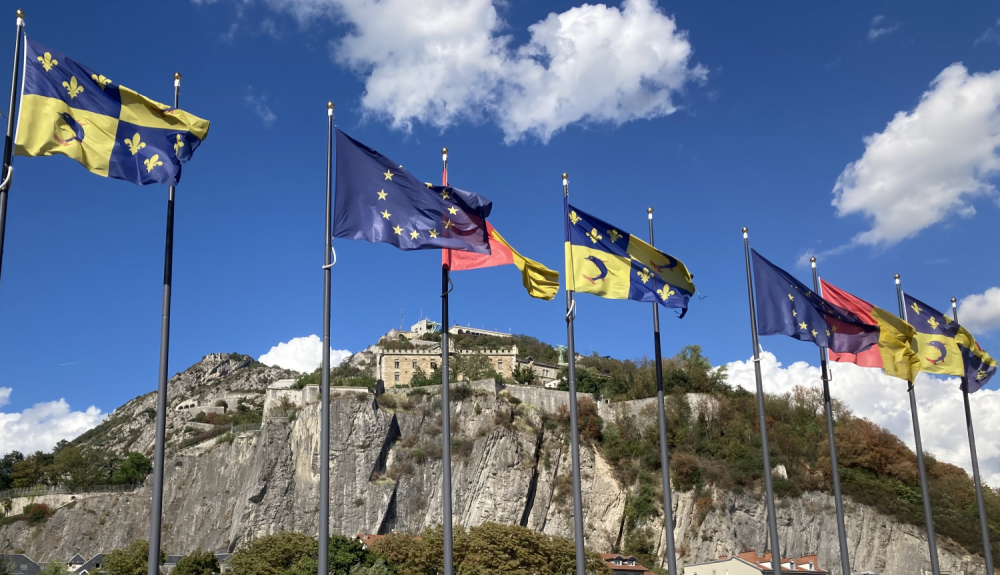A GIANT case study
Reflecting on a visit to the Grenoble Innovation for Advanced New Technologies (GIANT) Campus
By Donald Ross, June 2023

We recently presented the findings from a project I managed about science and innovation campuses. This involved case studies with eight campuses from around the world to consider how and why these sites have been successful up to now, and what they and other campuses might have to do differently to remain successful in the future.
We were able to do several of the case studies in person and I was lucky enough to spend a couple of days visiting the GIANT Innovation Campus in Grenoble with one of my colleagues.

I’d been excited about the visit as soon as colleagues at GIANT kindly confirmed that they would host us. It was great to be doing a case study in person again, especially in such a beautiful setting as Grenoble. Case study visits used to be a regular feature of the job before Covid-19 hit, but Teams and Zoom calls mean that these events are certainly rarer than they used to be – it was a long two and a half years between doing some ‘fieldwork’ with farmers in a cold, South Wales February pre-lockdown and visiting GIANT in the September sunshine last year.
GIANT was founded in 2008 to facilitate greater collaboration within and between research, higher education and industry already based in Grenoble. It was, in this respect, standing on the shoulders of (some research and innovation) giants. Our hosts at the French Alternative Energies and Atomic Energy Commission (CEA, a national organisation and key player in the GIANT initiative) had arranged a packed schedule for us. We had a series of really interesting discussions with partners involved in GIANT and the economic development of Grenoble more broadly. As well as the CEA, we spoke to other organisations at GIANT, including the European Synchrotron Radiation Facility, and also took a tram across town to speak to the Université Grenoble Alpes (below).

Hearing about the story of GIANT from the people involved and being able to tour the campus ourselves provided a lot of insight that it would have been impossible to get remotely. It is one thing to read about the campus online or discuss it over a video call, but quite another to see the sheer scale of the site for yourself. This was best appreciated from the Bastille high above Grenoble, and vantage point for the first photo, where the, erm, giant scale of GIANT was revealed.
Campuses – whether GIANT or elsewhere – are not islands divorced from the wider urban landscape and economic context. GIANT’s location adjacent to the train and bus stations on the edge of central Grenoble could clearly be seen from the Bastille. The accessibility of the campus was something we experienced for ourselves on the two mornings we walked over to the site.
The ground level tour of the campus helped us understand GIANT as a place and how the site had evolved both spatially and architecturally since the first scientific institutions were established there in the late 1950s. The most visually striking of the recent developments were probably the modern residential blocks immediately across the road and tram line from the main employment site.
We also saw security fences on different parts of GIANT which highlighted one of the challenges in coordinating a site of over 500 acres with multiple landowners. In response, the CEA recently opened the Y.SPOT buildings as an attempt to create a ‘neutral space’ between the fences where it is easier for organisations to collaborate. It was interesting to see how the buildings had been designed to encourage collaboration and the ‘facilitated serendipity’ that campus management teams strive to achieve. It felt like they were succeeding - there was certainly already a lunchtime buzz in the restaurant. This turned into a buzz of a slightly different kind at our table when I made a cultural faux pax by ordering coffee before the food had arrived.
Outside the restaurant, the buzz and energy was reflected in the enthusiasm and passion of everyone we spoke to, the construction activity on site, the crammed cycle parks, and the students returning after their summer break.

Visiting different locations inside and around the campus also gave the opportunity for informal conversations with our hosts. The mix of scheduled meetings, informal conversations and tours certainly gave us plenty of ideas to include in our overall study report. The travel also gave me an excuse to demonstrate my, strictly amateur, photography skills as showcased in this post.
All of this made going to Grenoble more useful for the project than a series of online discussions would have been. It also made it much more enjoyable. After all, there would have been no chance to explore Grenoble old town if the case study had been online! This was definitely a perk of the job and shouldn’t be underestimated. SQW colleagues recognised this, and it did mean that their sympathy was perhaps somewhat limited when a delayed flight out disrupted our travel plans and led to an unexpected stay in a hotel at Lyon Airport.
The views of the foothills of the Alps from the bus to Grenoble the next morning - or rather, later the same morning given the delay – were well worth missing out on a few hours of sleep for though. Whether I go back to Grenoble as a tourist or for work, I’ll be excited to see how GIANT develops over the coming years.
You can read more about our ‘Pioneer Campus 2040’ study on the Harwell Science and Innovation Campus website.